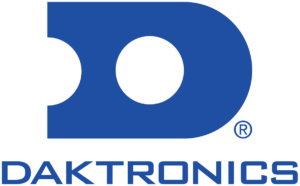Resolving Inventory Imbalance
660
Annual Sales
25
Debt

Daktronics, Brookings SD
Challenge
Design and manufacture of electronic scoreboards, programmable display systems and large screen video displays for sporting, commercial and transportation applications
- COVID pandemic caused slow-downs and stock-outs of electronic components and other materials needed to manufacture finished products.
- Delays in completing projects were further impacted by a difficult labor environment and COVID-related employee absences.
- The disruption of production caused WIP Inventory to increase and deliveries/invoicing to be deferred.
- Delivery dates were not achieved; to appease customers AR collections were deferred, increasing DSO
- Part shortages began to ease. However, the Company decided to increase “safety stock” of inventories to mitigate any future product shortages.
- To fund increased inventory levels, AP was stretched, and the credit facility was increased and fully drawn, reducing liquidity to critical levels.
Solution
- MorrisAnderson engaged by the Company as Financial Advisor.
- As deliveries improved, worked with customers to bring AR balances back to contract terms.
- Established protocols for a stricter approval process for Sales Managers to approve project quotes outside of pricing guidelines.
- Reviewed inventory by major SKU categories and standing purchase orders, identifying $20M of parts in a significant over-stocked
position or “orphaned.“ Started to wind down over-stocked inventory.
- Initiated weekly calls with Purchasing to better control inventory levels and to reduce Inventory “safety margin” orders.
- Developed a process to better track parts and equipment delivery timing to assembly facilities.
- Identified a significant increase in Net Contract Liabilities (deposits received prior to work performed) that would require $26M of
additional capital to reduce to historical averages.
Results
- Company was able to improve its Cash Conversion Cycle (DSO + DIO – DPO) by 20%-30% and was on target to reduce working capital by $35M.
- Validated plan to improve working capital, and liquidity enabled the Company to refinance the Bank Facility and avoid a sale-leaseback on a key manufacturing site, which management wanted to avoid.
- Subsequently, due to the improving balance sheet the Company was able to issue a $25M cost-effective 2nd lien convertible
note to partial fund the reduction of Net Contract Liabilities and provide liquidity to support the growth of the business.


